Let’s embark on our tour to get acquainted with the most comprehensive list of types of humor! Or should we say, the many different ways to enjoy the times of our lives, brewed with lots of laughter and witty sarcasm?
Some hearty folks get their kick out of motivational documentaries. Some mushy fellows like to weep as they watch their favorite romantic movie once again. Some rejoice in the thrilling action set-ups while the intellectual minds thrive on mystery and sci-fi for entertainment.
Now, you can pick one or two of those genres to add to your list of interests, but “humor” is what lies common for everyone!
According to Statista, comedy is the fourth most popular movie genre in the United States and Canada from 1995 to 2023 while it is the most preferred film genre among the Indians.
From leg-pulling among friends to the grand galas and award shows, humor makes its way into the conversations, in one form or another. Guess what, sometimes it doesn’t even need words! Well, we all have quite enjoyed Charlie Chaplin’s slapstick comedy.
Recommended Read: Top Ways To Improve Sense Of Humor.
Not to get all scientific, but it is said that the right frontal lobe of our brain is where it is processed whether something is funny. Let’s have a taste of 45 different types of humor along with their examples, and find out which one tickles your right frontal lobe up there!
List of 45 Types Of Humor
1. Physical Humor
At some time in your life, you must have googled “Funny videos” on YouTube, and you must have laughed like anything to the videos of people falling and tripping in all sorts of ways. One might claim to be a highly sarcastic person with the sense of humor of great intellect but when it comes to Physical Humor, it is a whole another type to get you rolling with laughter and fun.
This type of comedy is not limited to funny YouTube videos with people stumbling upon their shoelaces. Physical Comedy has been in the field of humor since people understood its interpretation. In “The Three Stooges,” Moe, Larry, and Curly engage in physical humor with their slapstick antics, involving eye pokes, face slaps, and exaggerated pratfalls, eliciting laughter through bodily comedy.
2. Slapstick Humor
You must have observed slapstick comedy for the very first time in a clown show, where a comic would have been jumping all around the set, doing ridiculous, absurd, and exaggerated acts to deliver a funny show.
Slapstick Humor is just that, the comics exaggerating the details with their overwhelmed reactions, stumbling upon their costumes, crying too loud, laughing even louder, many times showing the absence of mind in little situations and giving the people something to laugh about every other second.
It makes the most out of the concept of physical comedy, finally coming up with quite a humorous act to get the audience rolling with laughter.
This type of sense of humor has been a major genre of the old comedy movies, and the audience has enjoyed the slapstick comedy time and again.
A perfect example of slapstick would be the great sitcom we’ve all enjoyed, Mr. Bean!
This short video by Dick Van Dyke is also a classic example of Slapstick.
3. Farcical Humor
Farcical Humor is very closely related to slapstick humor, but here you may experience a more intelligently written act, blended with physical comedy.
This genre of comedy embraces the use of exaggerated actions and reactions by the characters to emphasize the plot, amalgamated with witty dialogues delivered with energy and brilliance. Like Slapstick, Farcical comedy is ridiculous and funny at the same time, it lights up a serious play with comedy. What beautifies farce is the use of repartee, the speedy dialogue chain bouncing back and forth between the characters in the act.
“Lend Me a Tenor,” a play by Ken Ludwig, exemplifies farcical humor with its rapid-fire mishaps, mistaken identities, and over-the-top situations, all leading to a hilariously chaotic crescendo.
4. Silent Humor
Although the name says it all but lets us, for once, use words to describe this epic genre, for the sake of the remarkable art of drama that it possesses.
Silent Humor is portrayed with the sharp and timely use of cinematography & videography, embraced with a great sense of direction. Physical humor is strongly used as a major ingredient in cooking the recipe of silent comedy. It was the most enjoyed in the old times, and the video clips of those silent films are still appreciated as a work of commendable art.
Physical burns are different from the ones given by words, and sometimes words hurt more. Well, however hurtful and offending some people might find it, many enjoy Edgy Humor, and many comedians have succeeded in making their audience laugh out loud and shocking them with their dank content at the same time.
Charlie Chaplin in “Modern Times” masterfully uses silent humor, relying on exaggerated facial expressions and physical comedy to portray the struggles of the industrial age, evoking laughter without spoken words.
5. Edgy Humor
Edgy Humor is deliberately offensive and involves a risky approach, it is the art of boldly picking up a potentially offensive subject and making it humorous, taking it right up to the line beyond which it could stop being funny, and just sound rude and shocking.
Comics like to play around the subject, exploring various stances in which the facetiousness of the topic could be used, in the name of banter. However, if the jokes and lines do land well among the audiences and their typical minds, Edgy Humor can induce a shock value and a deeper laugh, as compared to the ones caused by safer subject matters.
Ricky Gervais’ monologues at the Golden Globes often feature edgy humor, unapologetically targeting Hollywood elite with biting remarks and controversial jokes, pushing the boundaries of comfort and convention.
6. Blue Humor
Blue is the form of humor that is indecent or risqué, and it is broadly based on serious and heavy topics, often holding sentimental value to a group of society, such as sexism racism, and many times religious and homophobic viewpoints.
While delivering an act with blue as a genre, the comics usually use profane language, curse words, and sexual references, which might usually offend the audience and shock them if they are not ready to receive such content.
Let’s just say if a comedy show is featuring Blue Humor, you wouldn’t want to take your parents to it. Just watch the video below from Louis CK to know more.
7. Dark/Black/Gallows Humor
Dark Humor, often referred to as Black Humor or sometimes Gallows Humor, is a style in which the serious topics of society that are considered taboo or painful to discuss are brought to light using comedy, often boldly and seldom subtly by the comic.
Black Comedy generally encompasses subjects such as human sexuality, violence, discrimination, racism, religion, and death.
Dark Humor is not to be confused with Blue Humor, and neither does it promote obscenity. If you are a person with an open mind and broad understanding abilities, you might quite enjoy the black comedy, and at the same time sigh at the subject secretively.
Stanley Kubrick’s “Dr. Strangelove” uses dark humor, depicting the absurdity of nuclear war policies and the incompetence of leaders, presenting the grim prospect of annihilation with a satirical, comedic lens.
8. Aggressive Humor
Aggressive humor, in a nutshell, is likely to be detrimental towards others. It is depicted in the form of sarcasm and teasing which ignites ridicule and criticism, giving shape to wisecrack and jokes at the expense of other people.
Comics practicing this style are seen passing witty remarks on the subjects like racism and sexism, and whatever might offend people, and not being able to see it, or being fully aware and not caring about it.
Everyone must have witnessed or experienced aggressive humor when a so-called friend had passed a comment which would have seemed to be funny, but in reality, it had been hurtful.
Now, humor is not always delivered with self-explaining emotions lying behind the jokes, and the comedians’ expressions and voice modulation supporting the lines of the act.
There are times when the comics want to leave it “dry”. It may seem that it would make the delivery of the jokes easy as one is free of the pressure to express their emotions, but actually, it requires even more effort. How come? Let’s have a look at the two major categories of dry-wit humor.
In “The Wolf of Wall Street,” Jordan Belfort’s aggressively humorous speeches, laden with profanity and bravado, assert dominance and rally his team, embodying a confrontational and provocative comedic style.
9. Deadpan Humor / Dry Humor
Deadpan is a type of sense of humor in which the comedians deliberately display no emotion and deliver their jokes with a sort of neutrality in their manners, which is ironic, sarcastic, and hilarious if the audience gets it.
They won’t raise their brows or crack a smile and would still manage to make everyone around them fall laughing.
Deadpan comedy involves witty writing to make hysterical jokes and even better delivery to land the sarcasm the way it is supposed to. The neutrality of emotions makes the ridiculousness of the subject matter even more hilarious.
The only problem can be that sometimes people might not realise that you’re kidding.
Steven Wright is said to be the King of Deadpan Comedy, a few seconds into any of his videos, and the concept of deadpan would be crystal clear to you! The Office, the popular sitcom is a favorable example of dry humor, you must have seen many of your friends not like it, but it’s okay, they don’t like it because they don’t get it.
10. Droll Humor
Droll Humor is often dry and witty that gets people laughing through the odd, zany, or ridiculous behavior or speech, which when delivered seems to amuse people.
In this form of gag act, the absurdity of the comic and the whimsical behavior with an intelligently written script is what makes the act entertaining and induces laughter among the audience.
Bill Murray’s performance in “Ghostbusters” epitomizes droll humor, delivering lines with a dry, understated wit, maintaining a nonchalant demeanor amidst the chaos, and masterfully turning the absurd into the amusing.
11. Parodic Humor
Parody is a humorous imitation of something, a video, a movie, a poem, an artist, a writer, or an actor, often done with the intent of mockery and deliberate exaggeration to bring comic effect.
In archaic times, the writings of famous authors were often made fun of with the use of parody. And it continues, but this type of humor has greatly evolved over the years, and what we now experience as a parody in the world of the internet is the mocking imitation of song videos, movies, and web series. In the 21st century, parody is the most common type of humor in TV Shows and it is here to stay for long. Here is a parodic video of Bruno Mars’s “Uptown Funk.”
12. Satirical Humor
Satirical humor is the most common type of humor in literature. Satire is a way of mocking and shaming people, society, or government bodies by making fun of them with the use of follies and silly or exaggerated language.
It is meant to be humorous, but satire is actually used to reflect upon the wider issues in society, and it often is a source of constructive criticism towards the subject matter. Shashi Tharoor’s “The Great Indian Novel” is known to be a satirical novel, which is a fictional work of the story of the Indian epic, Mahabharata.
“Saturday Night Live” skillfully employs satirical humor, especially in its “Weekend Update” segment, where news stories are presented with a sarcastic twist, critiquing politics and society through sharp wit and irony.
Recommended Read: Top Ways To Make an Indian Laugh.
13. Spoof
Spoof is a type of humor in writing, theatre, or act that is the witty imitation of a specific genre of art, films, or novels, with the exaggeration of their characteristic features for creating the comic effect.
Spoof could be confused with Satire or Parody because it falls under the same umbrella, but actually, spoof entertains a broader subject, a genre rather than a particular work of art.
If you write a novel mocking one specific novel, it is a parody. But if you write a novel, mocking, let’s say, the romance novels of the twentieth century, then it’s a spoof.
For example, The Adventures of Don Quixote, a novel written by Spanish writer Miguel de Cervantes Saavedra in 1605 is a spoof, as it mocks the romance novels of that time. Given below is a spoof of Donald Trump vs. Hillary Clinton Debate.
14. Burlesque
Burlesque is the genre of humor in which the serious works of art, literature, music or theatre, are caricatured by ridiculous and nonsensical treatment of their subjects so that seems to be funny.
It is entertaining and funny, and its purpose is to make a statement related to the theme. However, the audience of Burlesque must have prior knowledge about the subject, otherwise, it won’t make sense to them.
Who doesn’t like someone who can be funny and witty at the same time! It brings us to an area of wisecrack where words do all the work!
Mel Brooks’ film “Blazing Saddles” uses burlesque humor, mockingly exaggerating Western film tropes and characters, turning serious themes into ludicrous, exaggerated comedy, and poking fun at genre conventions.
15. Wordplay
Wordplay Humor is the art or a literary technique of using words and wit for humor, for amusement, or whatever the intended effect is.
This genre of humor includes puns, double entendres, phonetic mix-ups, etc.
For example, in Harry Potter, Fred and George used wordplay for a trick candy that causes constipation, in the following way:
“Why Are You Worrying About You-Know-Who?
You SHOULD Be Worrying About U-NO-POO — the Constipation Sensation That’s Gripping the Nation!”
Guys often tend to use bizarre wordplay as pick-up lines to impress a girl and get a date, like:
“Are you a parking ticket? ‘Cause you’ve got fine written all over you.”
16. Epigrammatic Humor
Humor created via epigrams, i.e., Epigrammatic type is concise, short, witty, and clever, which could express paradox or satire, such as a maxim or an aphorism, a succinct and witty statement.
For example,
“Mankind must put an end to war, or war will put an end to mankind.”—John F. Kennedy, Jr
“I haven’t spoken to my wife in years. I didn’t want to interrupt her!”―Rodney Dangerfield
Oscar Wilde’s quip, “I can resist everything except temptation,” exemplifies epigrammatic humor, delivering a concise, witty, and paradoxical observation that reveals deeper truths about human nature in a humorous light.
17. Hyperbolic Humor
Hyperbolic humor involves extreme exaggeration for comedic effect, making situations or characteristics ludicrously overstated to highlight their absurdity. It’s a way to amplify the humorous element by pushing scenarios beyond the bounds of reality, creating a stark contrast between the expected and the exaggerated, and drawing attention to the ridiculousness of the subject matter.
“Your brain is the size of a pea!”
“My Psychology teacher is older than the hills.”
When such statements, called hyperboles, with extreme and obvious exaggeration are used to make a point and to get a quick laugh, it is when you know, you are experiencing Hyperbolic form. Hyperboles are cracked jokingly and are not meant to be taken seriously.
In “Anchorman,” Ron Burgundy’s claim of San Diego’s name meaning “a whale’s private parts” showcases hyperbolic humor, exaggerating for comic effect and highlighting the character’s blissful ignorance.
18. Mordant Humor
Mordant is an artistic style of comedy that is biting, cruel, and unkind, but still funny in its way. It is often quite critical and insulting and holds the purpose of mocking someone or something.
Let’s look at an example.
“Nice perfume. Do you marinate in it?”
Watch this video titled, “Chris Hemsworth and Scarlett Johansson Insult Each Other” to get an even better idea. Although the two are not skilled in it, their insults to each other are funny in a way.
19. Witty Humor
Well, the name says it all. Witty Humor is a form born from wit and intelligence, and it is clever and funny because first, it makes you think, and then as you get it, you can do nothing but laugh out loud.
Chandler Bing from Friends, the TV series is the epitome of Witty Humor.
For example, in Phoebe’s wedding rehearsal he said,
“I’m glad we’re having a rehearsal dinner. I rarely practice my meals before I eat. ”
20. Ironic Humor
This category of humor uses irony to show how it is funny that what is being said or done signifies the opposite.
For example, if you are putting up an awareness post on Instagram that “How Social Media Disturbs Mental Health”, then it is ironic because you’re using social media itself to enlighten people about how it can take a toll on them.
Enough about the wits! Let’s dive into a contrasting genre of humor, where wits are left at home, and trash talk is the only form of conversation. Although it is quite funny if you’ve got the desired audience. Whatever it is, we’ve all experienced it, used it, or been used at. Sophomoric or Juvenile Humor, Bodily Humor, and Surreal Humor fall in this category.
In “The Simpsons,” Homer frequently exhibits ironic humor, like his attempts at parenting often leading to more chaos, humorously contrasting his intentions with the comically disastrous outcomes of his actions.
21. Juvenile/Sophomoric Humor
Juvenile Humor involves pranks, gags, name-calling, toilet humor, and other childish activities that are based on a silly sense of immaturity.
It is also called Sophomoric Humor, which comes from sophomore, a second-year student of a four-year educational course. Jokes cracked from a sophomoric view are puerile, the ones making those jokes hold great confidence but lack awareness of their ignorance.
The film “American Pie” is renowned for its juvenile humor, especially in the scene where Jim’s intimate encounter with a pie leads to a mortifying parental discovery, epitomizing teen awkwardness.
22. Bodily Humor
Bodily Humor deals with toilet jokes, fart jokes, and playfulness that can be based on various bodily functions.
Flatulence Humor also falls under the genre of Bodily Humor.
The movie “There’s Something About Mary” features bodily humor, notably in the scene where Ben Stiller’s character has an embarrassingly awkward encounter involving a stuck zipper, provoking cringe-worthy laughter.
23. Surreal Humor
Surreal Comedy is a form that involves bizarre, creepy, and nonsensical behavior which is also funny at the same time. It includes deliberate and obvious illogical behavior to create amusement.
Absurd and dream-like situations are created to make the jokes unpredictable for the audience.
For Example:
“My friend said, “sticks and stones may break my bones but words will never hurt me.” So, I threw a dictionary at his face.”
Not all the genres of humor are script-ready! There are times when the comics have to go on the stage, understand the audience, and just wing it the way they feel is best. It requires one to be funny, and extremely amazing at both coming up with jokes and humorously delivering them.
Monty Python’s “The Ministry of Silly Walks” sketch embodies surreal humor, presenting a bizarre government bureau devoted to developing ridiculously elaborate walks, blending absurdity with a deadpan, matter-of-fact delivery.
24. Improvisational Humor / Improv
Improvisational Humor, shortly called improv, is a genre of comedy that is unplanned and is performed without a script. The comics have to make up the whole act, along with the dialogues at the moment, while they are performing.
They can draw a source of inspiration from the audience or absolutely anything to start with the act, and use their wit, sense of humor, and theatrical skills to present the whole act.
The TV show “Whose Line Is It Anyway?” showcases improvisational humor, with performers spontaneously creating sketches and songs based on audience suggestions, leading to unpredictable and often hilarious results.
25. Alternative Humor
Alternative Humor is a style that doesn’t rely on the already set standards and ways of comedy. This form of comedy is considered to be different from a pre-existing style or a mainstream way of a comedy routine, and it breaks free from the standardized structure of punch lines and jokes.
Bo Burnham’s special “Inside” epitomizes alternative humor, blending music, introspective monologues, and offbeat, existential comedy, offering a unique, innovative take on traditional stand-up in the backdrop of a pandemic lockdown.
26. Situational Humor
The humor that arises out of everyday situations, which are quite mundane and ordinary, is called Situational Humor.
Situational Comedy is a very popular genre and is widely used in TV shows. Series like “Friends” and “How I Met Your Mother” are based on this style.
It uses various genres of humor, such as slapstick, screwball, and farce, to make the situation more and more hilarious for the audience.
27. Anecdotal Humor
Creating humor out of an anecdote, i.e. an abstract story, either real or fictional, told with great characterization and concrete details about the subjects and places involved.
An anecdote is always presented in a recalling way of the mentioned incidents or events involving real people.
“Kevin Hart Took His Son’s Phone But Forgot One Thing”, a stand-up comedy video by Kevin Hart is the example of a hilarious anecdote.
28. Sketch
Sketch comedy is a humorous series of short scenes called sketches, played by a group of people, which make up a whole story, or a complete sketch. Sketches contain various humorous elements and unlike improv comedy, they are well-written, rehearsed, and memorized.
“Saturday Night Live” thrives on sketch humor, offering short, comedic vignettes like “Celebrity Jeopardy,” where impersonated celebrities comically bumble through the game show, showcasing sharp wit and cultural satire.
29. Topical Humor
The topical type is based on trends or current events, in any field like politics, news, or pop-culture. It is satirical, subtle, witty, and often hard-hitting. After Trump’s Disastrous Axios Interview, American comedian Jimmy Fallon uploaded a video making fun of the president’s interview on his YouTube channel.
30. Screwball Humor
Screwball type is a subgenre of the genre, “Romance-Comedy”, and it is well known for the satirical depiction of the traditional romantic stories.
In films based on screwball humor, it is often seen that the female character dominates the relationship instead of the male character, while his masculinity is being challenged. It includes farce, repartee, and plots comprising marriage and courtship.
The film “Airplane!” exemplifies screwball humor with its rapid-fire puns, visual gags, and absurd situations, like a blow-up autopilot flying a plane, creating a chaotic yet hilarious viewing experience.
31. Observational Humor
It is a genre of comedy that is based on the common aspects of everyday life and pokes fun at the things that go unnoticed. Observational comedy also brings out the facts about society by observing and stating things that aren’t as normal as our society accepts them to be. It humorously does all of that!
It often leaves the audience wondering, “Oh, I never thought about it this way!‘, or “Oh, yessss.. How could I have not noticed that!”
George Carlin humorously observed, “Have you ever noticed that anybody driving slower than you is an idiot, and anyone going faster than you is a maniac?” This classic line exemplifies observational humor by highlighting the common, relatable frustrations of driving, presenting them in a witty and humorous manner.
32. Stand-Up
Stand-up comedy is probably the most famous type of comedy these days. It is where a comic gets on stage to perform a monologue, or deliver a humorous act by interacting with the audience. The comedian might also make use of props in the act.
In a stand-up routine, the comic can use different types of humor such as farcical, blue, dark, cringe, deadpan, and more.
Now, humor isn’t always seen in shows, movies, or stand-up videos. Humor is a part of our everyday lives. Most of us choose to involve it in our daily conversations for sometimes impressing our colleagues, sometimes making new friends, and many times to just have fun in whatever we are doing. When it comes to oneself, humor can be perceived and conferred in two ways. Let’s have a look!
33. Self-Enhancing Humor
This is positive humor based on oneself, which is used to find amusement in tough times and sailing through it in a fun way, and by avoiding stress. Also, this type of humor in advertising is used by top brands when they are launching a superior product to its previous version.
“Self- Enhancing” here refers to the quality of using humor in a good-natured way, while targeting one-self in a situation.
For example, if Jack didn’t score well in an exam, he says, “I have failed the exam. I’ve not lost my mind. I’ll do better next year!” In “Parks and Recreation,” the character Tom Haverford, played by Aziz Ansari, constantly boasts about his entrepreneurial ventures and lifestyle in an exaggerated, self-enhancing humorous manner, despite frequent setbacks.
34. Self-Deprecating Humor
Creating humor by targeting oneself in an aggressive or unhealthy way, by creating humor at one’s own expense, and putting yourself down to sound funny, is called Self-Deprecating Humor.
If we look at it psychologically, this is considered to be an unhealthy form of humor when one tries to sound funny by pitying themselves, for example, we found a tweet that says:
“It’s garbage day?
I can’t believe they made a day dedicated to me. :)”
Let’s say you are a comedian. You have a show, and you know anything about your audience. Now you’re thinking what genre of humor would be apt for the audience that could comprise anyone, any age, gender, city, or country.
Comedian Rodney Dangerfield famously used self-deprecating humor, often saying, “I get no respect!” to highlight his own misfortunes and shortcomings, eliciting laughter through his exaggerated lack of self-esteem.
35. Lowbrow Humor
This humor can be understood by anyone with little or no effort. Like bathroom jokes, fart jokes, or sarcasm relating to common things which everyone comes across, is called Lowbrow humor.
It is a different type of comedy that doesn’t require background knowledge of anything and it is very easy to understand and relate to. It is not specific to any culture or heritage either, it is for people who come from anywhere or everywhere.
It’s not always that everyone would get a joke. It can be because it is made to get a laugh out of a specific type of audience. In the movie “Dumb and Dumber,” the characters Lloyd and Harry engage in slapstick comedy and crude jokes, epitomizing lowbrow humor with their foolish antics and simplistic, physical gags.
36. Highbrow Humor
Highbrow is the opposite of lowbrow, as the name suggests. It is the type of humor which is sophisticated and cultured, and not everyone would get it, and it requires the concerned background knowledge to be understood, such as high-level math jokes, or a chemistry joke pulled by a chemist.
It is characterized by advanced knowledge regarding the subject matter and is deliberately witty. Highbrow comedy can be based on classic literature, history, or politics.
In the play “The Importance of Being Earnest,” Oscar Wilde’s characters engage in witty banter and sophisticated wordplay, exemplifying highbrow humor with their clever and refined comedic exchanges.
37. Heritage Humor
It is a genre in which the comics discuss the stereotypes, myths, or traits about their heritage or culture, playfully.
A Hindu joking about the cows being worshipped in their culture would be Heritage Humor.
In “My Big Fat Greek Wedding,” the character Gus Portokalos humorously attributes every word’s origin to Greek, playfully exaggerating his pride in Greek heritage and creating cultural humor.
38. Inside Humor
Inside Humor is used to characterize the private jokes or inside jokes. These inside jokes and this genre of humor are understood by the people who are a part of a particular group, club, or society.
Only the people who are aware of the circumstances behind an inside joke find it humorous.
For example, if you’re a member of a religious group, you will get the jokes being pulled by other members of your group, and someone who is not in your group, would probably not get that joke.
In “The Office,” the recurring “That’s what she said” joke builds an inside humor among viewers, as characters unexpectedly turn mundane statements into humorous, suggestive innuendos.
39. Internet Humor
Internet Humor refers to the repetitive circulation of jokes or something humorous via the internet which then becomes a trend or a popular meme.
These types of jokes are gaining more popularity among millennials every day because, well, they are on the internet after all. Reddit, Instagram, YouTube, and other social apps are the major platforms for Internet humor.
The “Rickroll” phenomenon, where internet users are tricked into clicking a link that leads to Rick Astley’s song “Never Gonna Give You Up,” exemplifies playful deception in internet humor.
40. Musical Humor
Musical Humor is found in films or theatrical plays in which dialogues are interspersed with songs to create humor and also advance with the plotline.
A real-life example of musical humor is found in Franz Joseph Haydn’s “Symphony No. 94 in G Major,” often referred to as the “Surprise Symphony.” In the second movement, a serene, gently rocking theme is suddenly interrupted by a loud chord. The unexpected contrast was Haydn’s playful way of startling his audience, ensuring they were paying attention, and it remains a famous instance of humor in classical music.
41. Affiliative Humor
It is the style of comedy that is used to enhance one’s relationships with new people, friends, or in the workplace. It is an amusing and positive kind of humor used to facilitate conversations in a fun and benevolent way, to often ease tension among people.
Ellen DeGeneres is the epitome of Affiliative Humor as he does a great job with her guests on her talk show.
42. One-Line Joke Humor
As the name suggests, this is the humor created using one-liners, jokes delivered using a single line. A one-liner needs to be short, concise, and meaningful to draw the impact in a quick instant.
They are majorly created using wordplay, they can even consist of puns.
For example:
“The worst time to have a heart attack is during a game of charades.” – Demetri Martin
43. Cringe Humor
This is the humor derived from the awkwardness of the social situations, created by putting the characters in greatly embarrassing situations where they humiliate themselves by saying or doing the most awkward or offensive things.
For those who get it, Cringe Humor can be hilarious, and for those who don’t, it can just be offensive and meaningless.
There are many scenes in “The Office” where Michael Scott does Cringe Comedy. Watch the video below, for instance.
Also, TikTok!
44. Ventriloquism
This genre of comedy is often less heard of but probably witnessed by everyone, either in real life or in reels!
Humor using Ventriloquism is created by performing a humorous act in which a ventriloquist, the person leading the action, uses his puppet, or dummy, by creating an illusion and portraying that their voice is coming from the dummy, rather than themselves.
Jeff Dunham’s character, Achmed the Dead Terrorist, humorously misunderstands phrases, exclaiming “Silence! I kill you!” to the audience’s laughter, showcasing a playful yet edgy interaction between puppet and ventriloquist.
45. Anti-humor
Anti-humor is a kind of indirect humor, where the comic delivers a joke or punch line, which is deliberately not funny, and also not expected by the audience at the time, which in itself creates an ironic situation that is quite humorous.
The pranks pulled around the world are based on anti-humor, like the one you’re pulling the prank on is not expecting it, and the main deed of the prank pulled by you isn’t funny but played out as a prank, it becomes hysterical!
Andy Kaufman’s infamous act of reading “The Great Gatsby” aloud to a bewildered audience highlights anti-humor, using the lack of a traditional punchline to create an awkwardly humorous situation.
Conclusion
So, you are all set with your “Humor-Guide”, encompassing all the types of humor that could possibly have been witnessed by great eras of literature, theatre, and art. Being suffused with plenty of humor examples, we hope reading this blog would have been an illuminating journey.
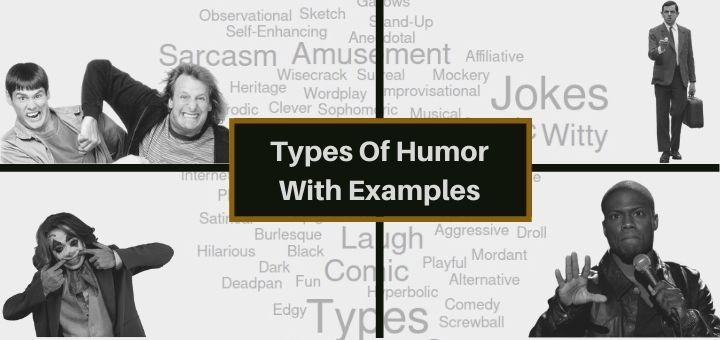

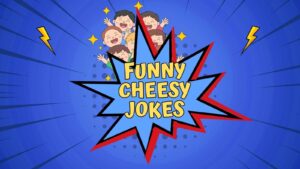
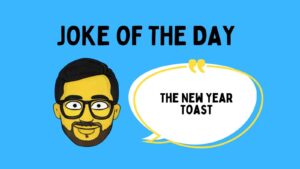
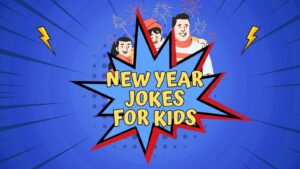

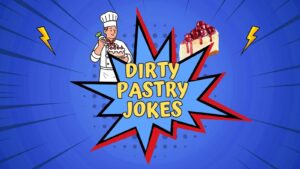

This is good stuff man, good stuff.
Best blog on types of humour, I have ever seen! Thanks!
Thank you for explaining the different types of jokes. I love the way you have explained with examples.
Very impressive stuff proud of you son!
Cool blog about humour!
Thank you for saving my time! I needed it for my essay on humor.
I didn’t know about so many kinds of humour. Thanks.
This blog on humor kinds is awesome.
Observational comedy is cool. You just need to take examples out of your daily life.
I love dark comedy. It really appreciates some feelings that people are afraid of.
Intelligent content